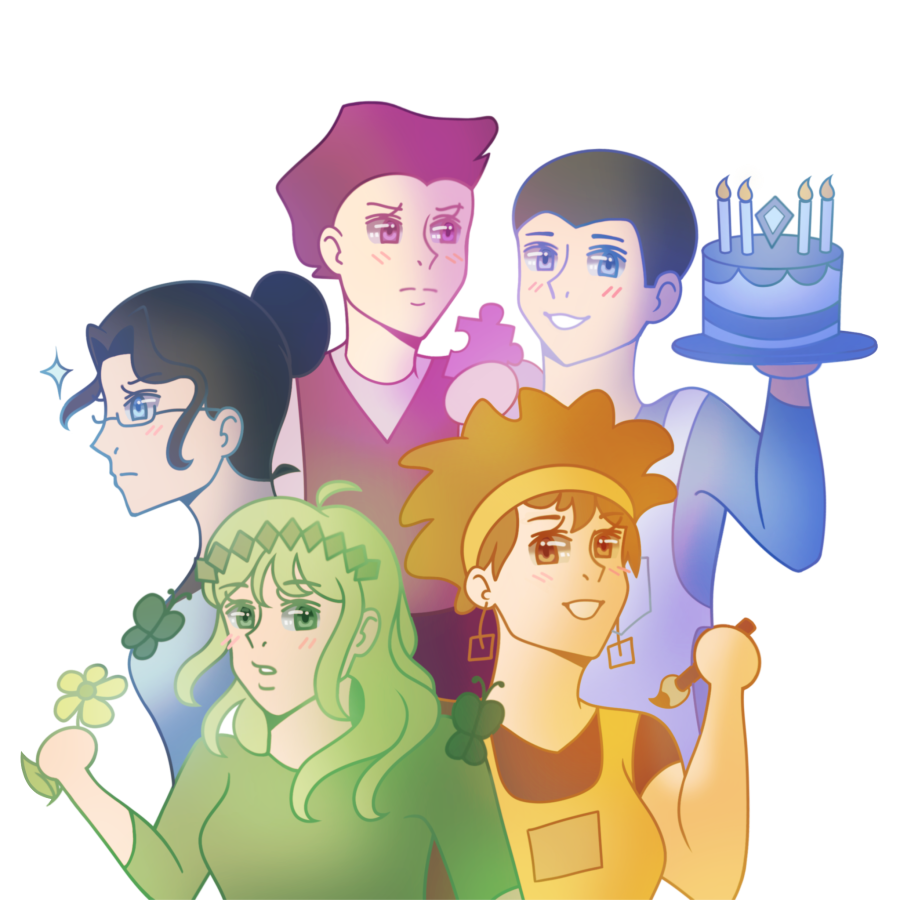Intrigued by its inquisitive questions and encouraged by her older sister, then-fourth-grader Carlin Lee took the Myers-Briggs Type Indicator personality test. The MBTI test is a self-assessment that matches the test-taker to one of 16 personality types, developed by Isabel Myers and Katherine Briggs in the 1900s. Now a sophomore, Lee said she still uses her MBTI results to overcome her weaknesses and explore self-growth.
“I remember I first got the ESTJ personality type, and then I totally forgot about it for like five years,” Lee said. “Then I took it again when I was in middle school, and that time I got ENTJ. After doing some research on my cognitive functions, I realized, I’m not an ENTJ. I’m an INTJ.”
Test takers answer questions about themselves related to their preferences, values and behaviors. The test results are then given as four letters that correspond to a personality type. Proponents of the test say it can tell people about their personality type and give people insight into topics like their strengths and weaknesses, romantic relationships, friendships and career paths.
Junior Robin Li is an INTP based on the MBTI test.
“The first letter is about introversion or extroversion, I or E,” Li said. “Then the next letter is either sensing or intuition, S or N. Sensing is about facts and intuition is about noticing patterns. The third letter is whether we make decisions based on our feelings or logic and thinking, F or T. The last letter is judging or perceiving, J or P. Generally, perceiving types gather as much information as possible and don’t limit it. Judging types usually limit their observations and organize them.”
Lee said she was shocked by how much her results resonated with how she felt about herself. As an INTJ, Lee has introverted, intuitive, thinking and judging personality traits, or as 16 Personalities labels her, a “thoughtful tactician.”
“I thought it was actually really creepy because it had my personality down to the core, that’s exactly (who I am),” Lee said.
Lee said the accuracy of the MBTI test gave her the opportunity to identify and fix her perceived weaknesses.
“I always viewed myself as shy, and I didn’t really know how to talk with people,” Lee said. “And I got this test back saying you’re an introvert and this is why. Instead of using that as an excuse, I was like, ‘Oh, that’s a genuine problem that I need to fix.’”
Although the MBTI test has not been largely validated by science, AP Psychology teacher Melinda Mattes said people still use it as a way to connect with others.
“We like to be able to group and organize (ourselves),” Mattes said. “Our brains are always looking for cognitive short-cuts.”
For Li, getting into the MBTI community – where those interested in MBTI can connect with other like-minded individuals – helped to deepen her relationships with others who are also fascinated by the MBTI.
“I found out one day that my friend and I both watch the same MBTI YouTuber, and we felt more connected because we could relate to his videos,” Li said. “I also send posts and TikToks about MBTIs to my friends. I really get to know them more through it and the content is relatable and funny.”
Because the MBTI has only 16 possible personality outcomes, Lee said it’s important people remember they don’t have to fit into just one of them and the test should be regarded as more of a continuum.
“I consider myself an INTJ, but I have some ENTJ qualities that don’t really fit INTJ qualities,” Lee said. “So knowing that it’s a spectrum is important: the MBTI is a tool that you can use to help yourself get better, but it’s not something that you should use to dictate how you should live.”
Even though the MBTI test does not give a full, accurate analysis of one’s personality, Mattes said personality tests ultimately help people to get to know themselves through introspection.
“Understanding your patterns, or your go-to responses, can help foster healthy relationships, whether they are friendships, familial relationships or romantic relationships,” Mattes said.
Lee said the MBTI test helped her to be more introspective and create meaningful relationships with herself and others.
“(The test) is important for your own headspace, but it’s also important for how you treat other people,” Lee said. “The way you view yourself on the inside directly correlates with how you treat other people on the outside.”
Li said the MBTI test opened up new opportunities for connecting with friends in a non-superficial way.
“The MBTI is a good way to relate to others because the people with similar types usually have the same values as you,” Li said. “With my friends, I got to know them a lot better and I could connect with them on a deeper level.”



